Vanessa Thill
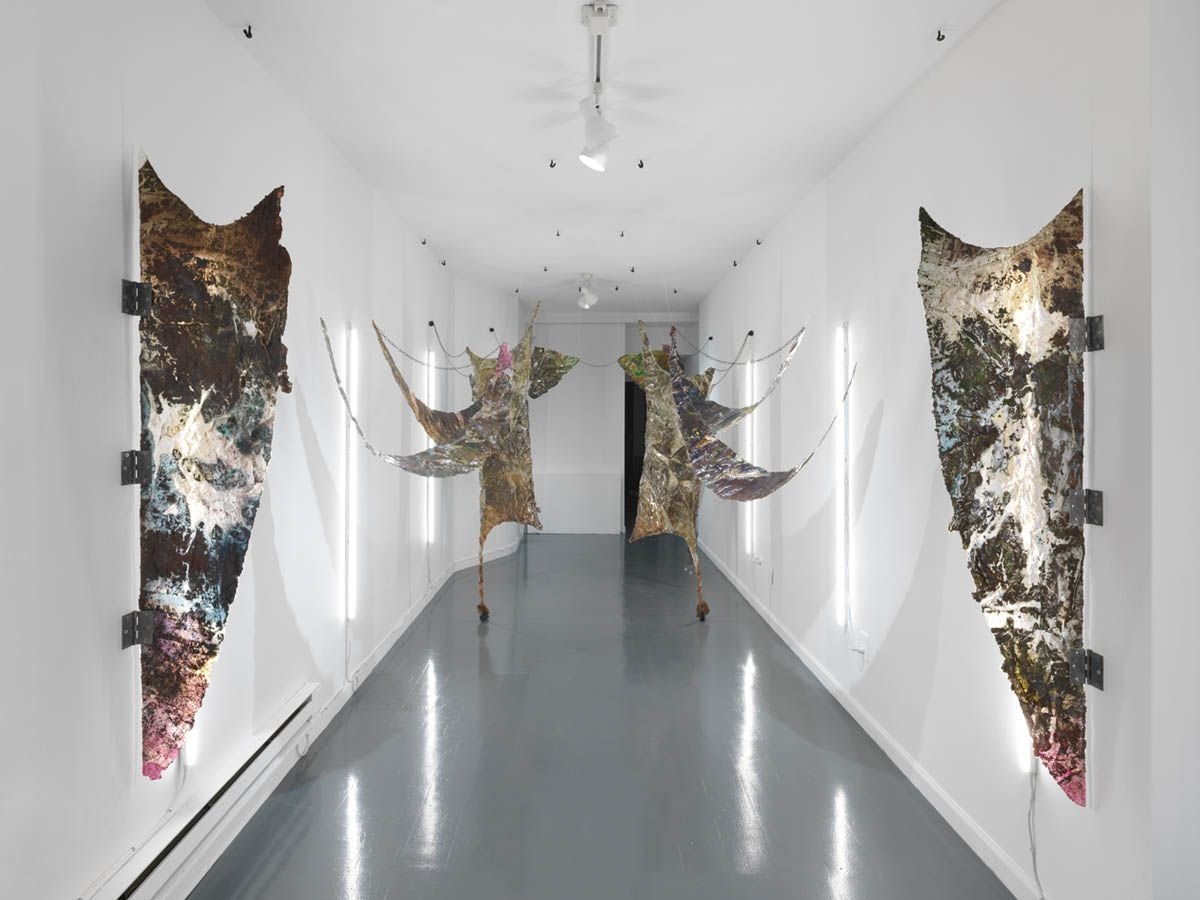
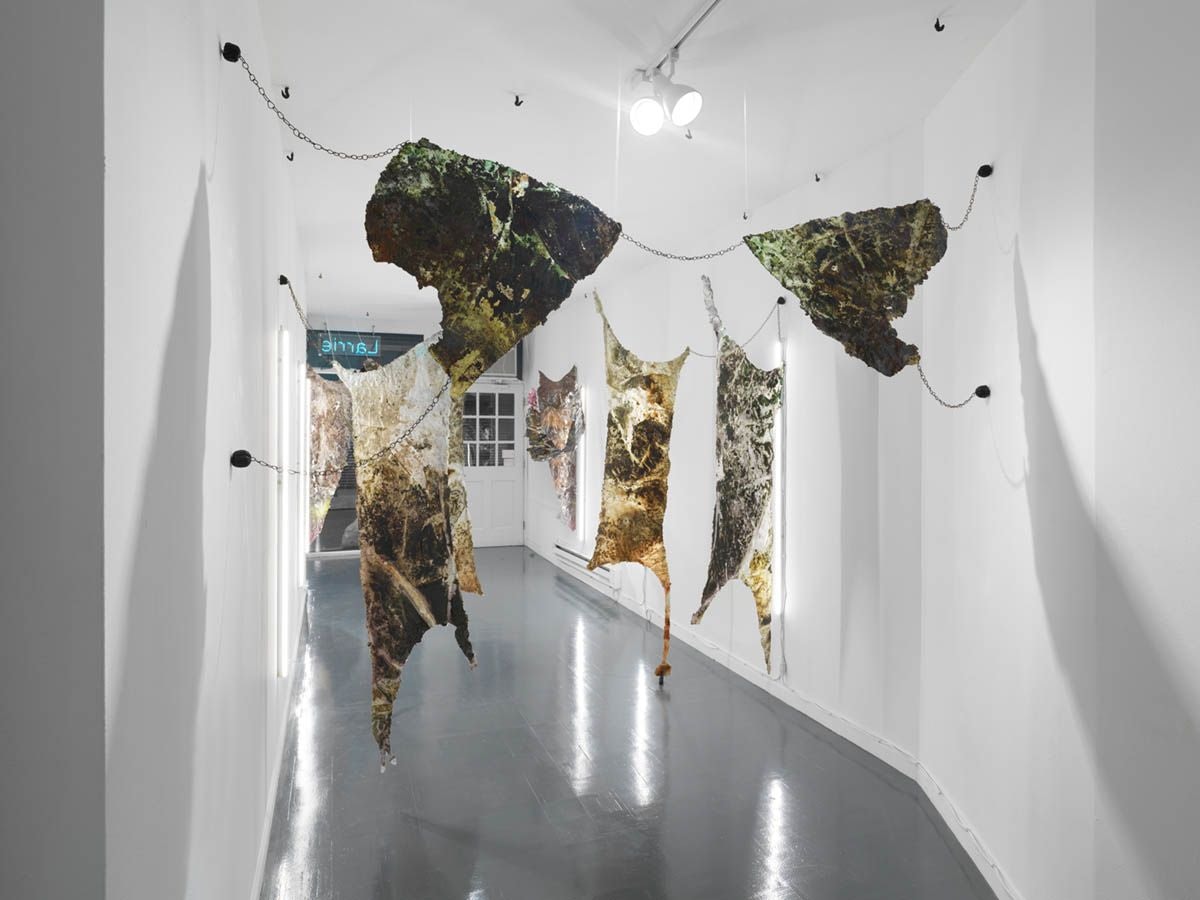
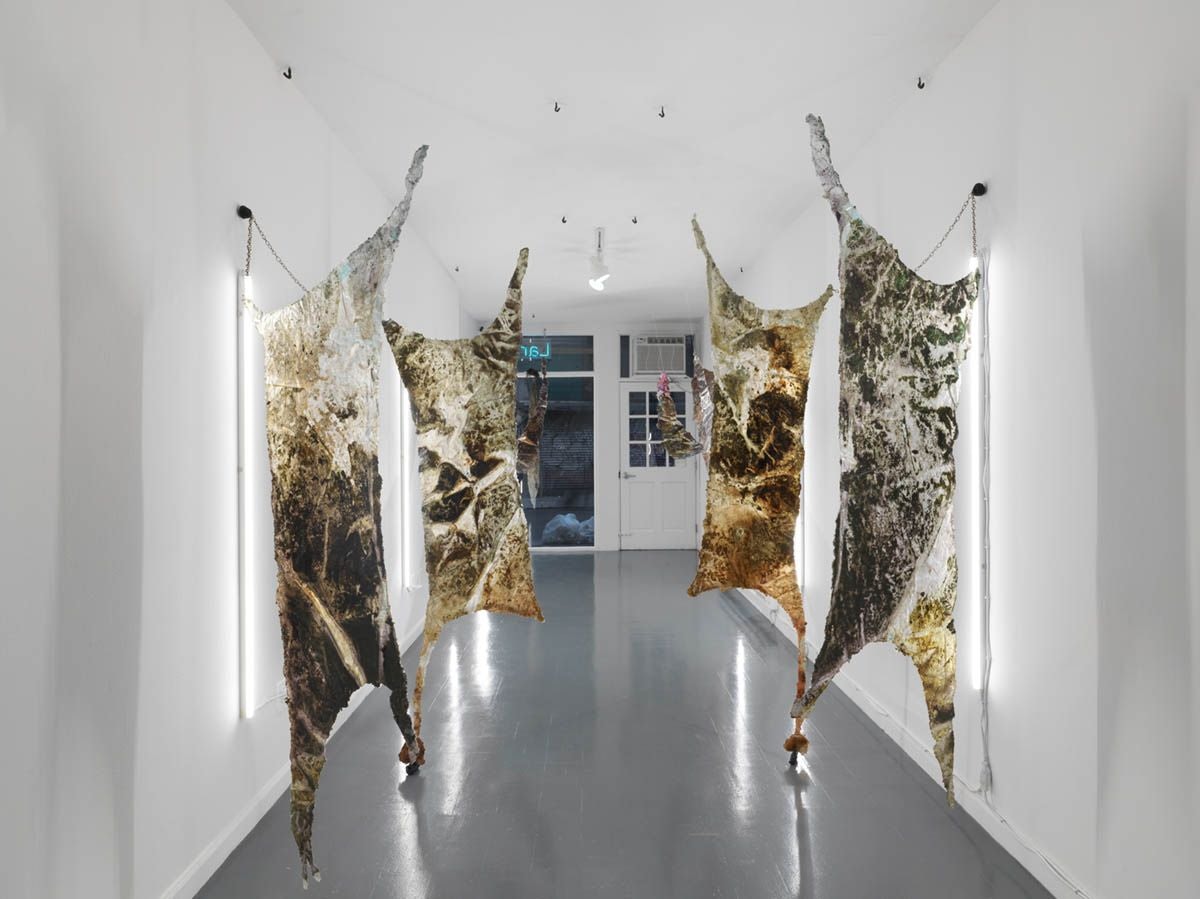
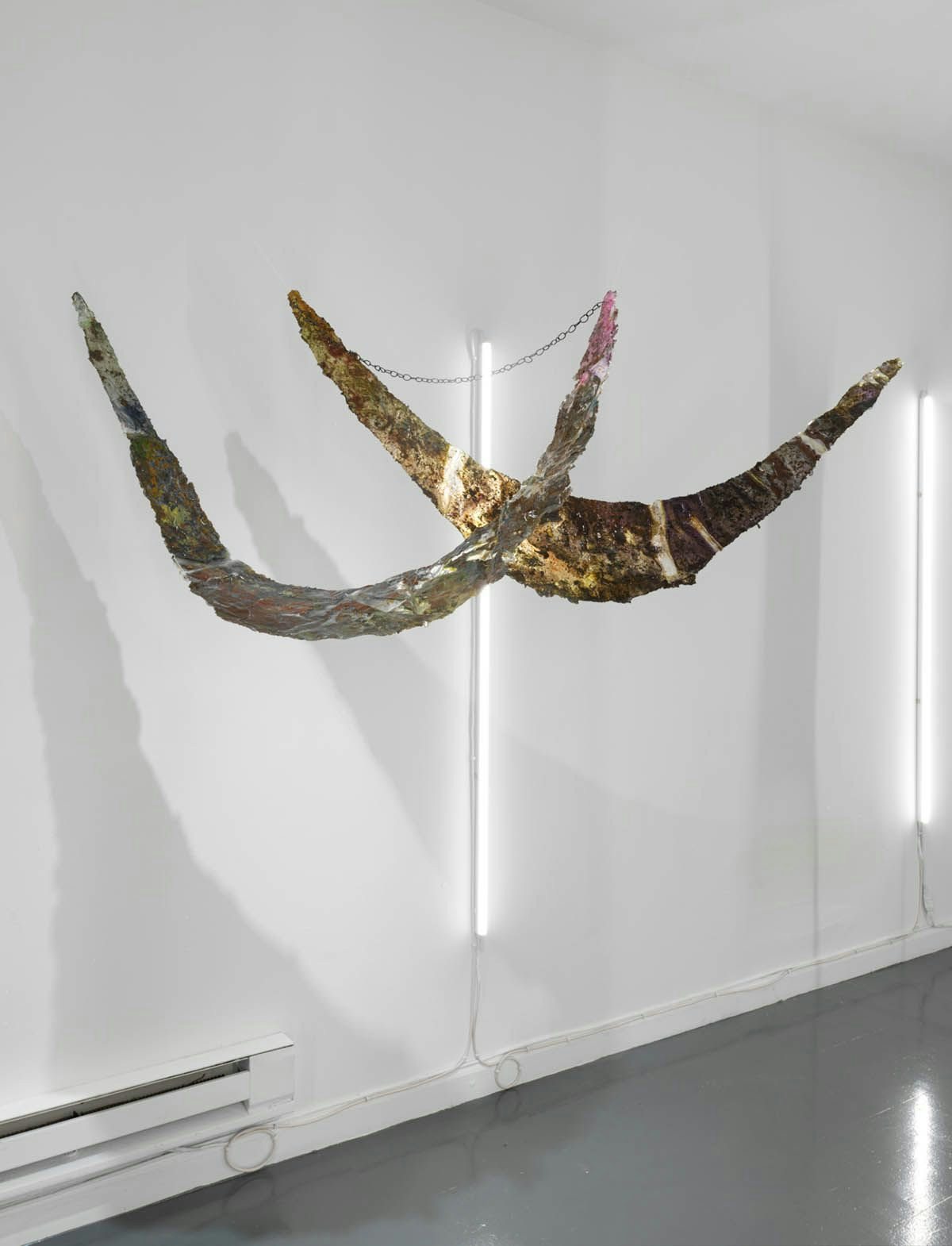
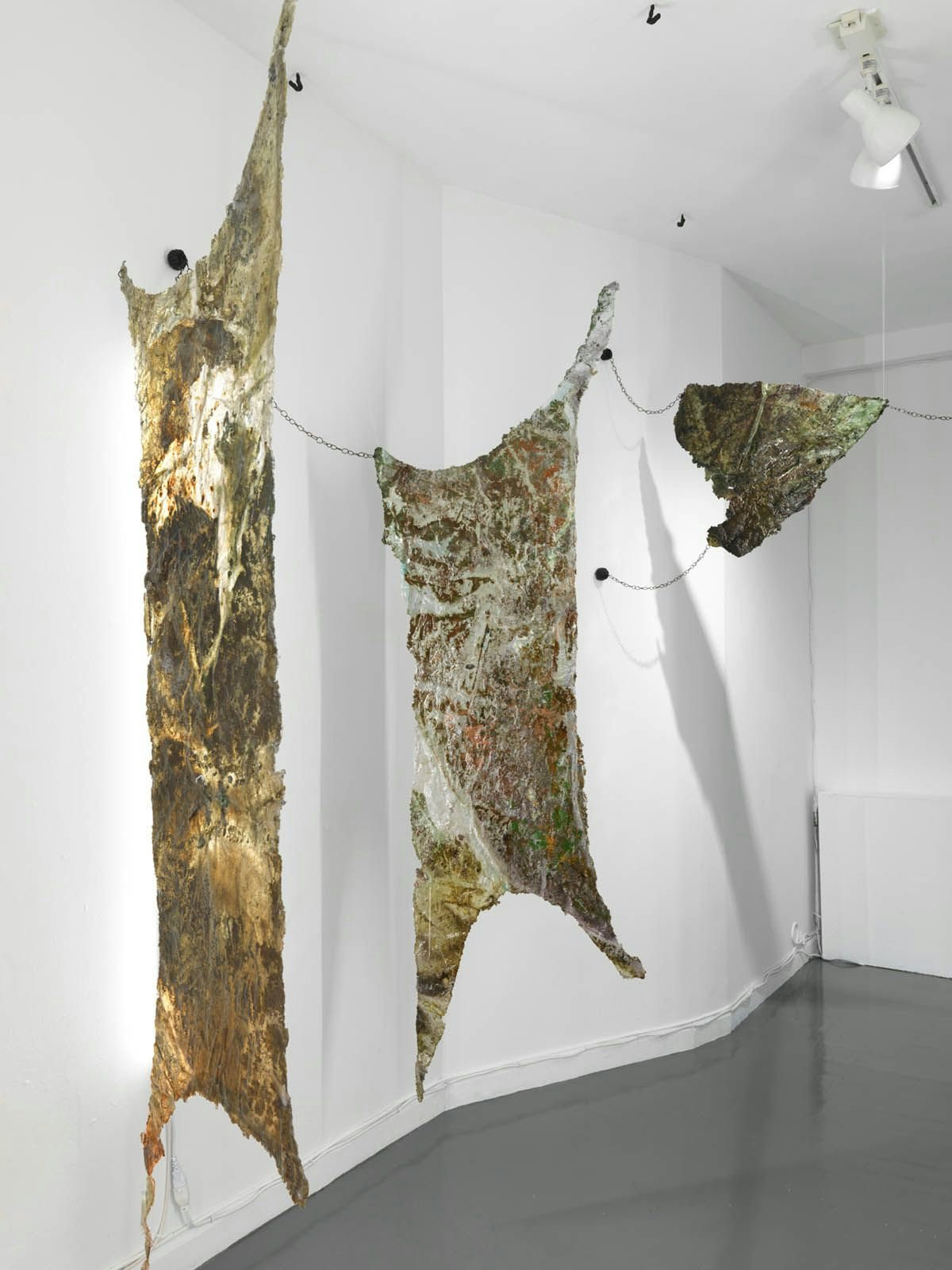
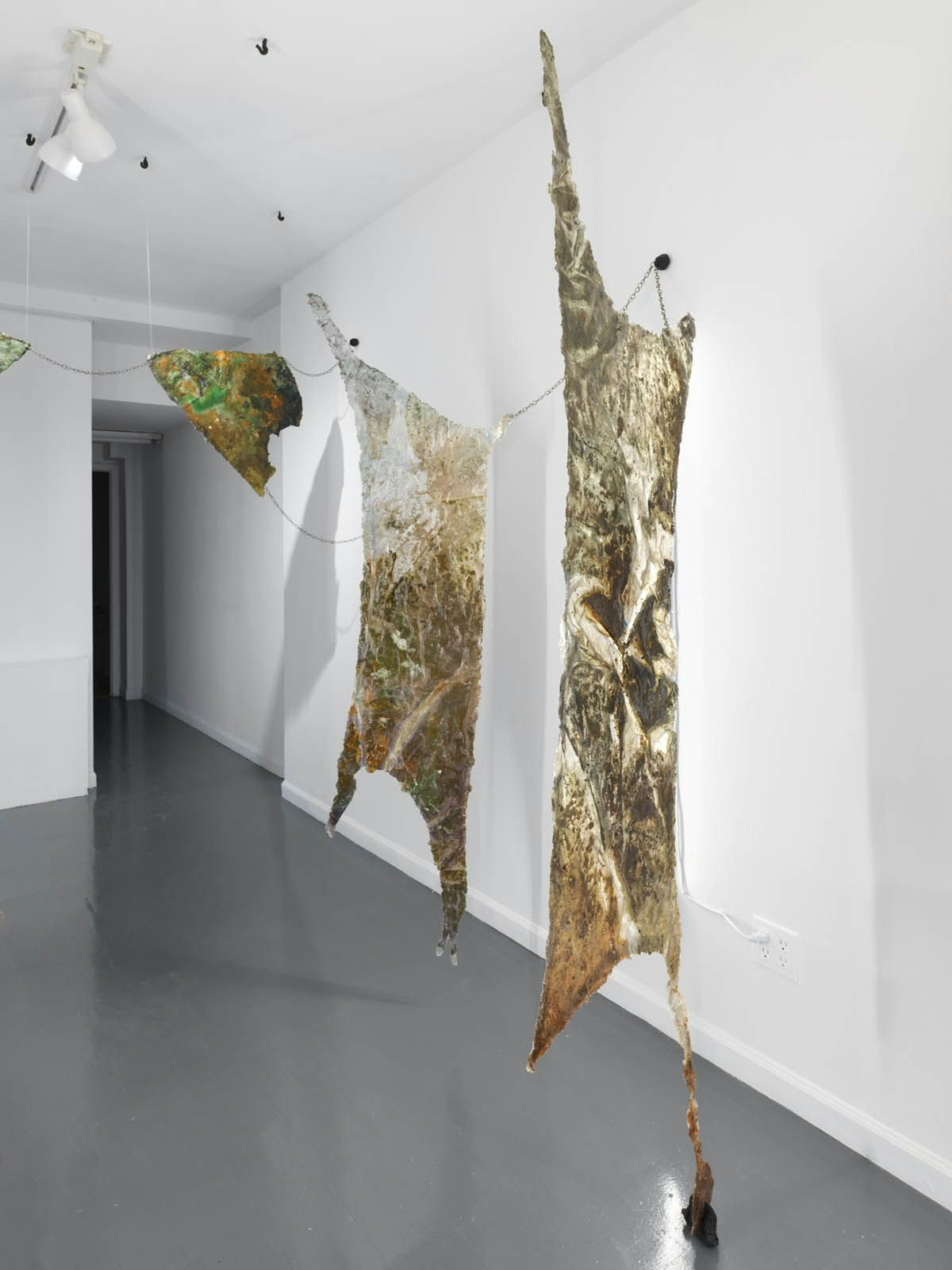
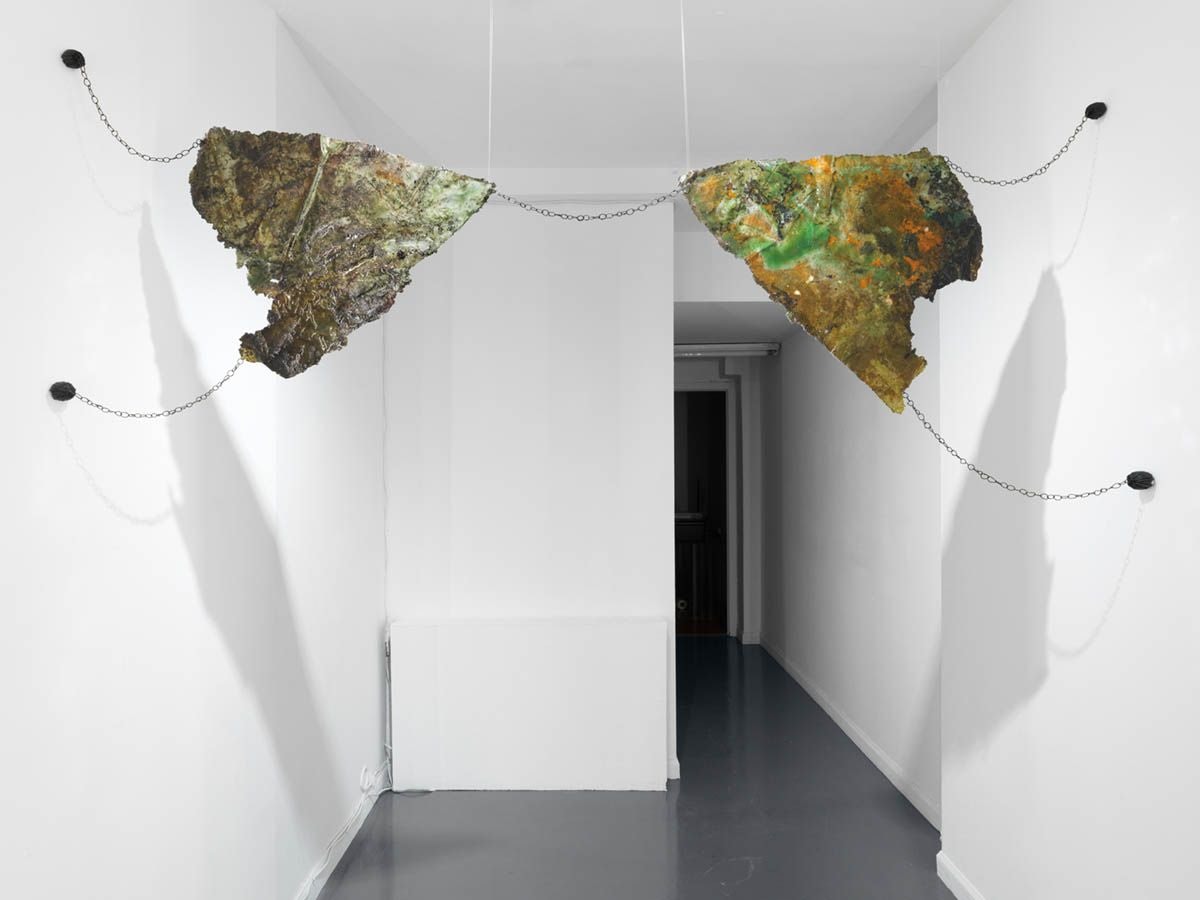
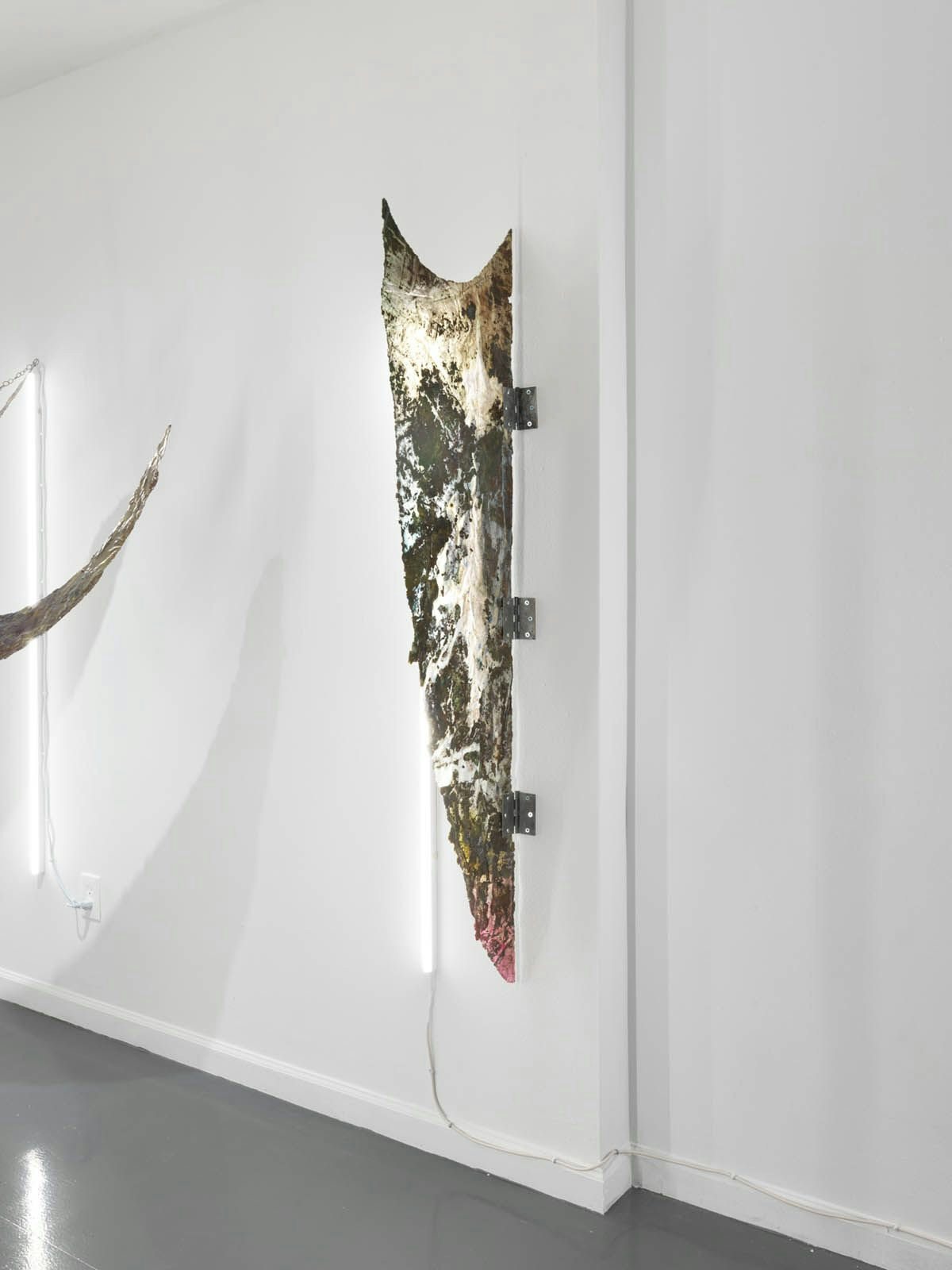
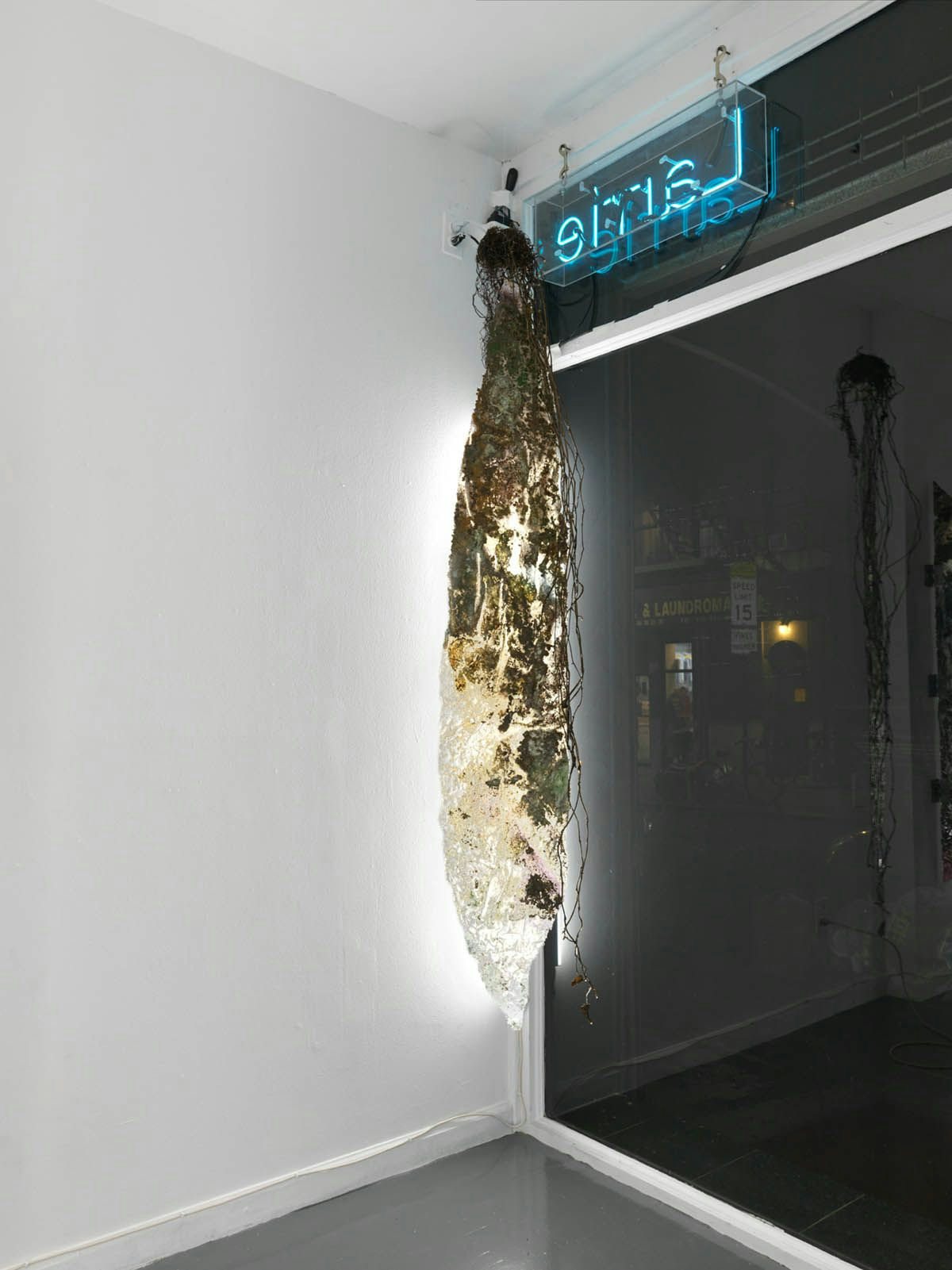
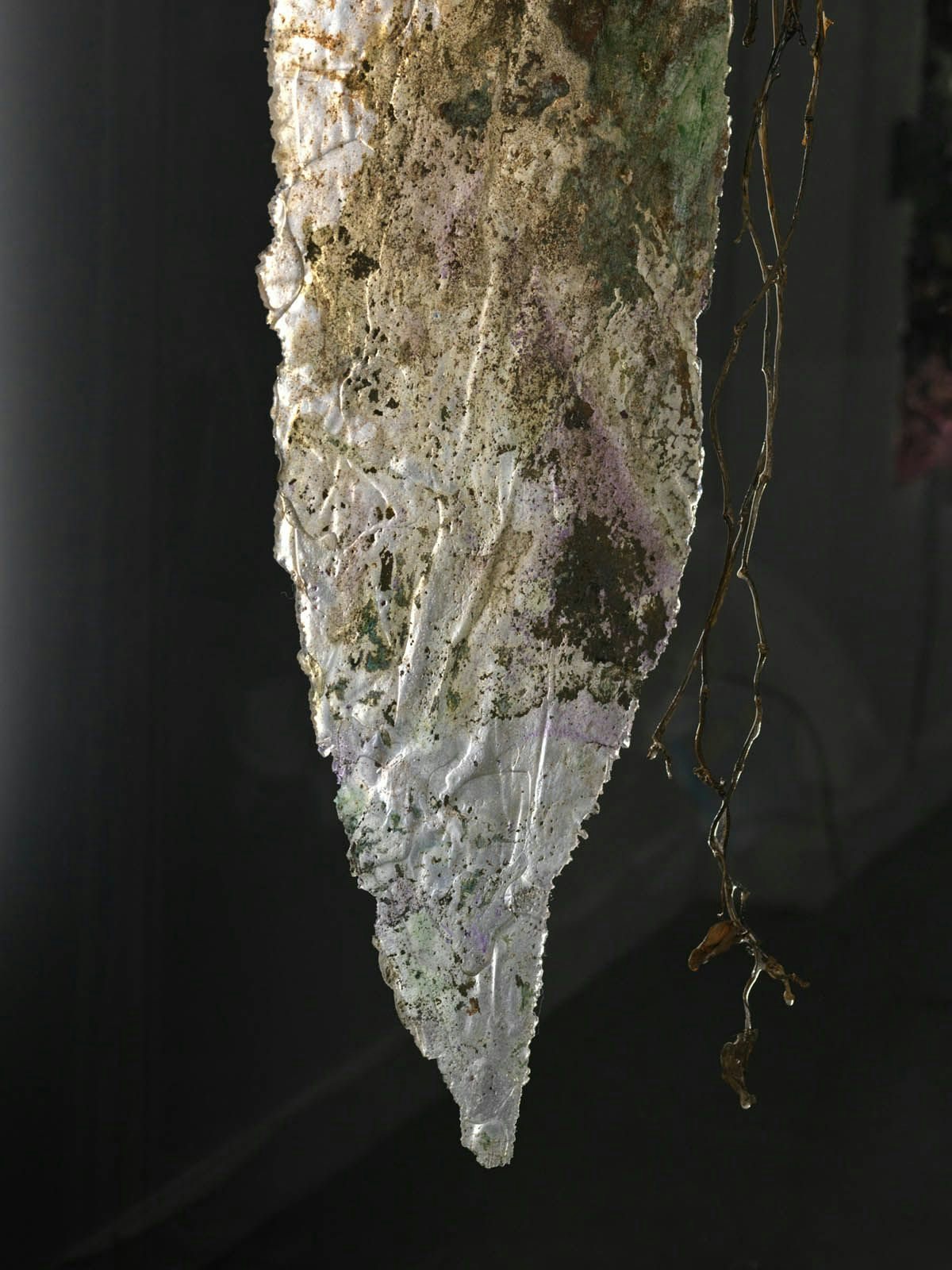
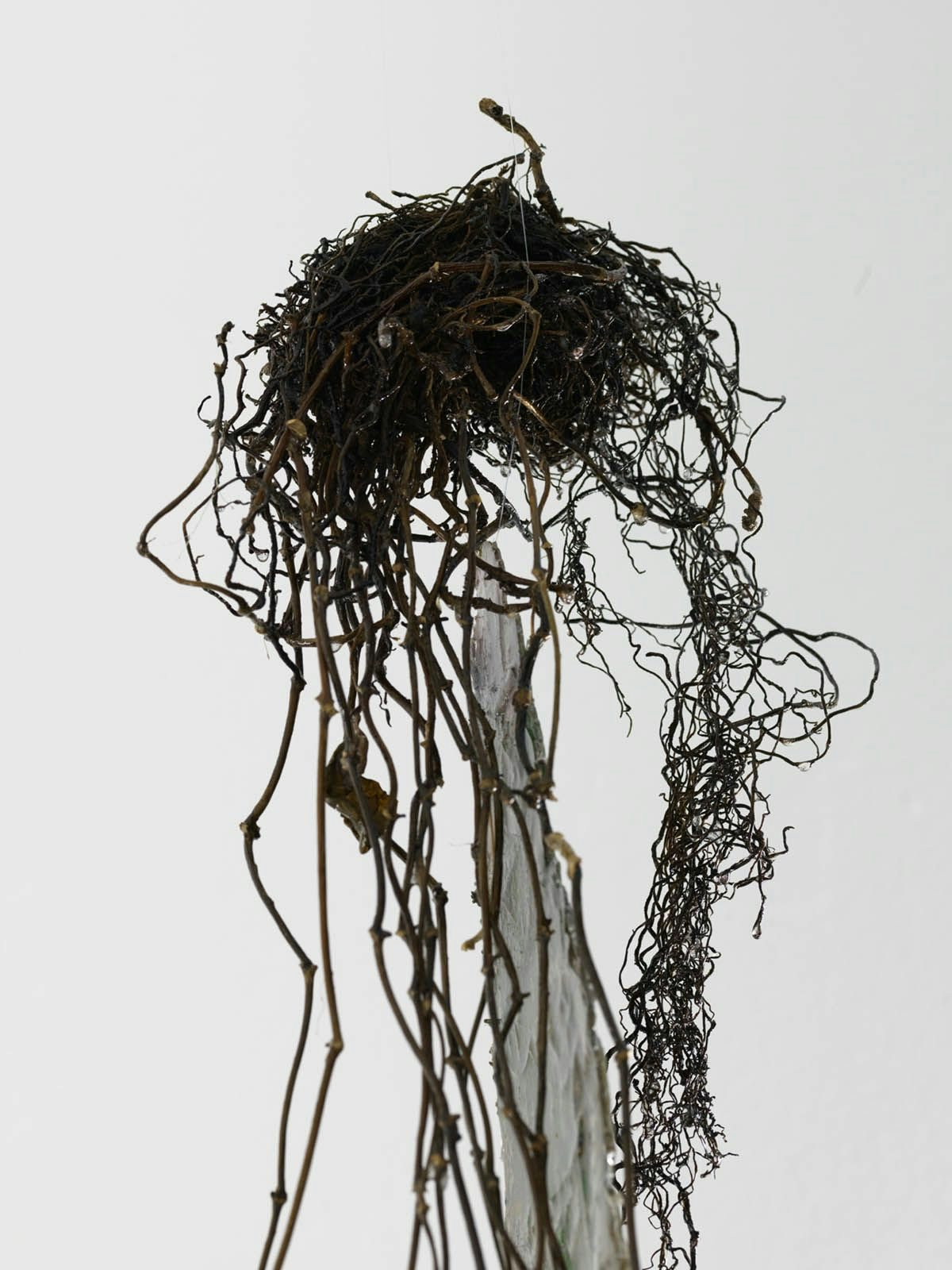
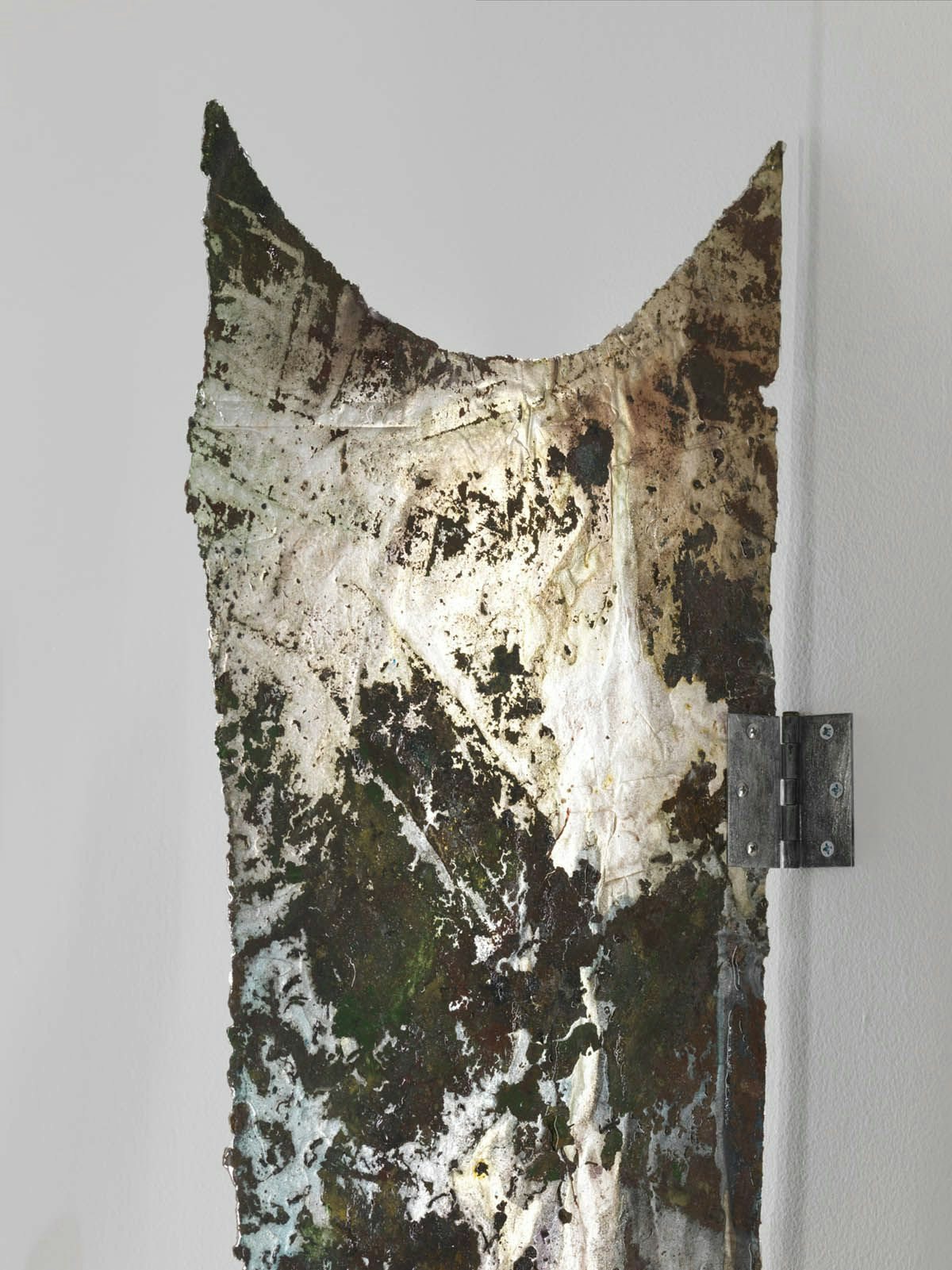
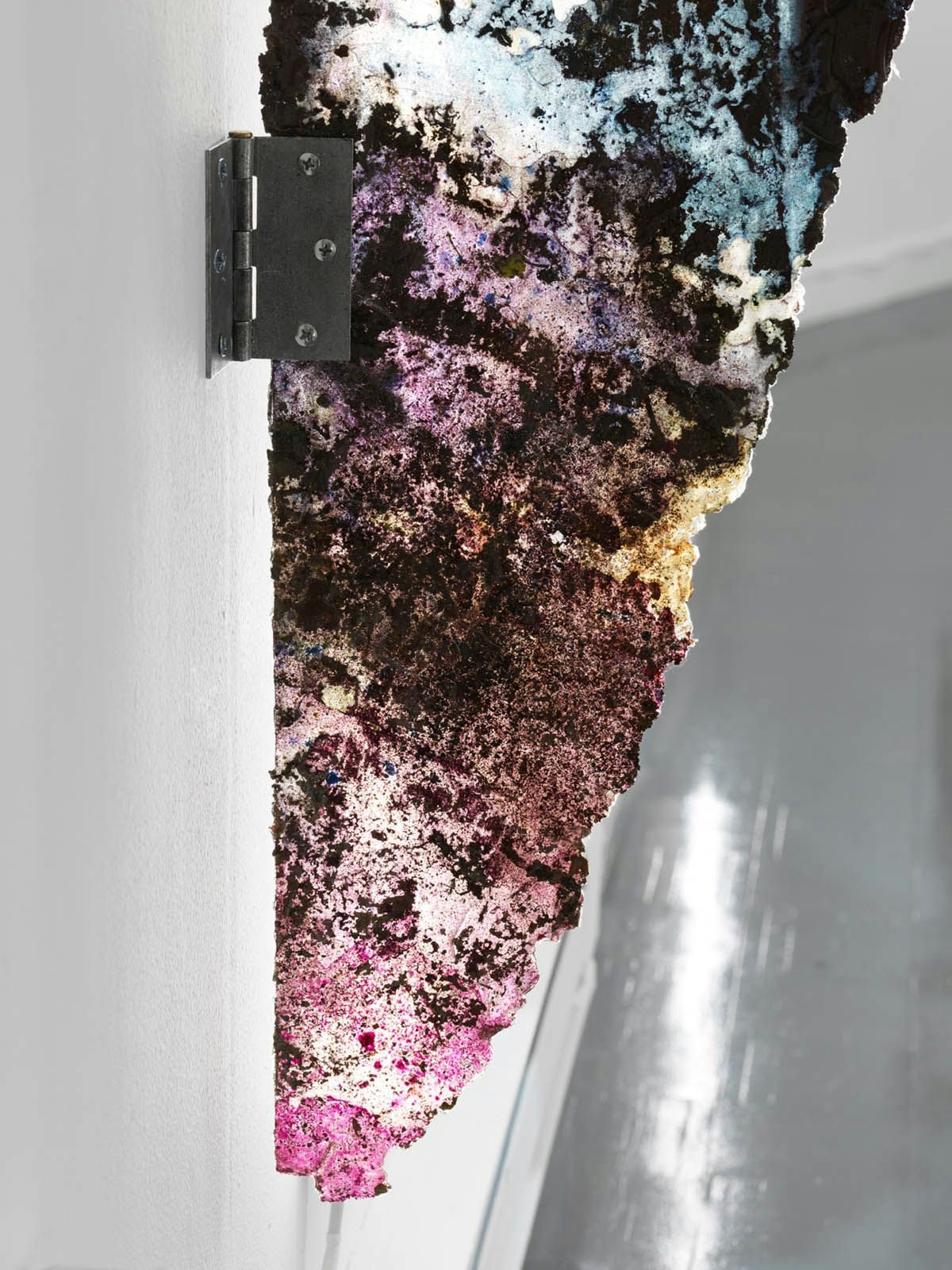
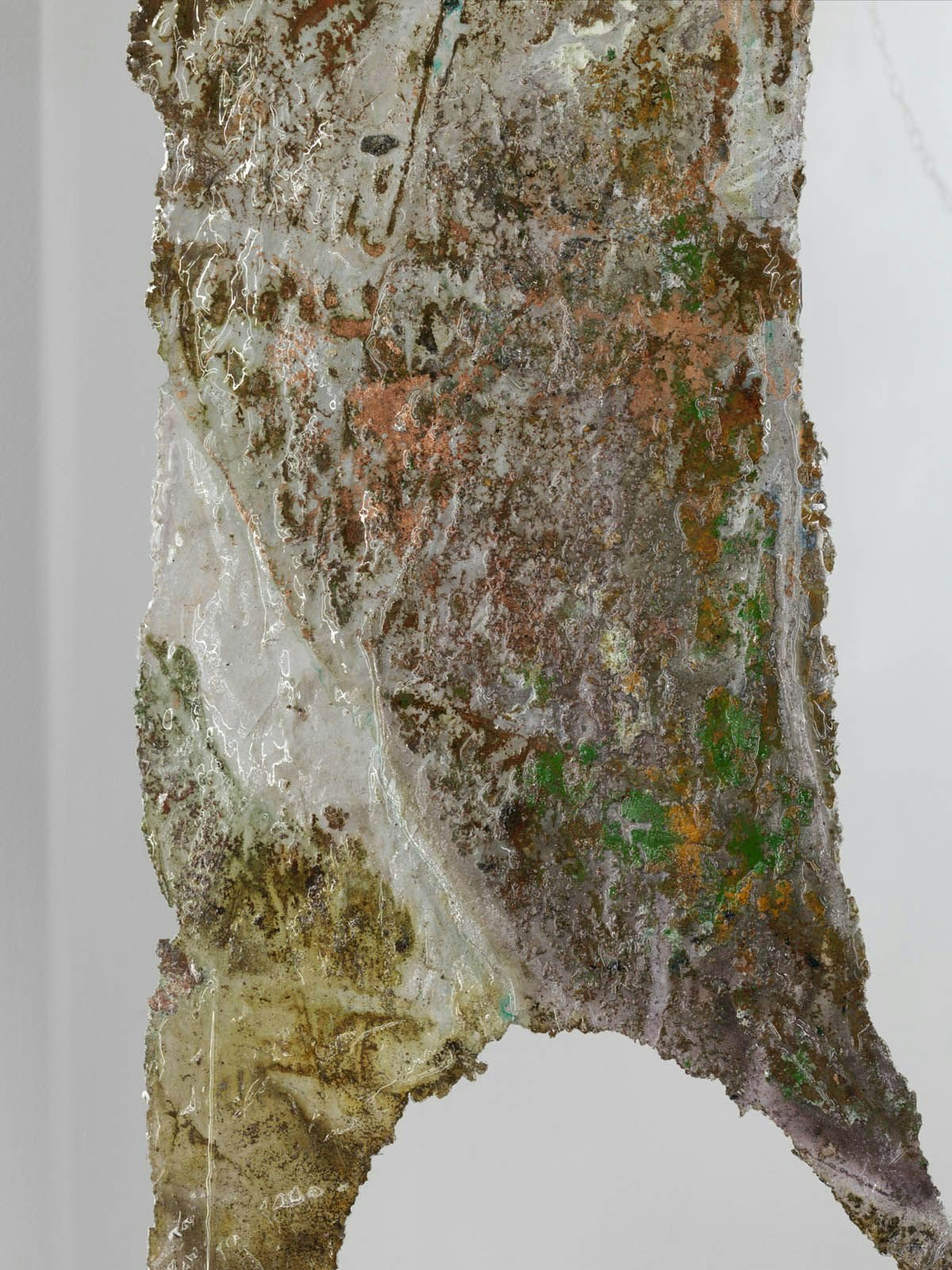
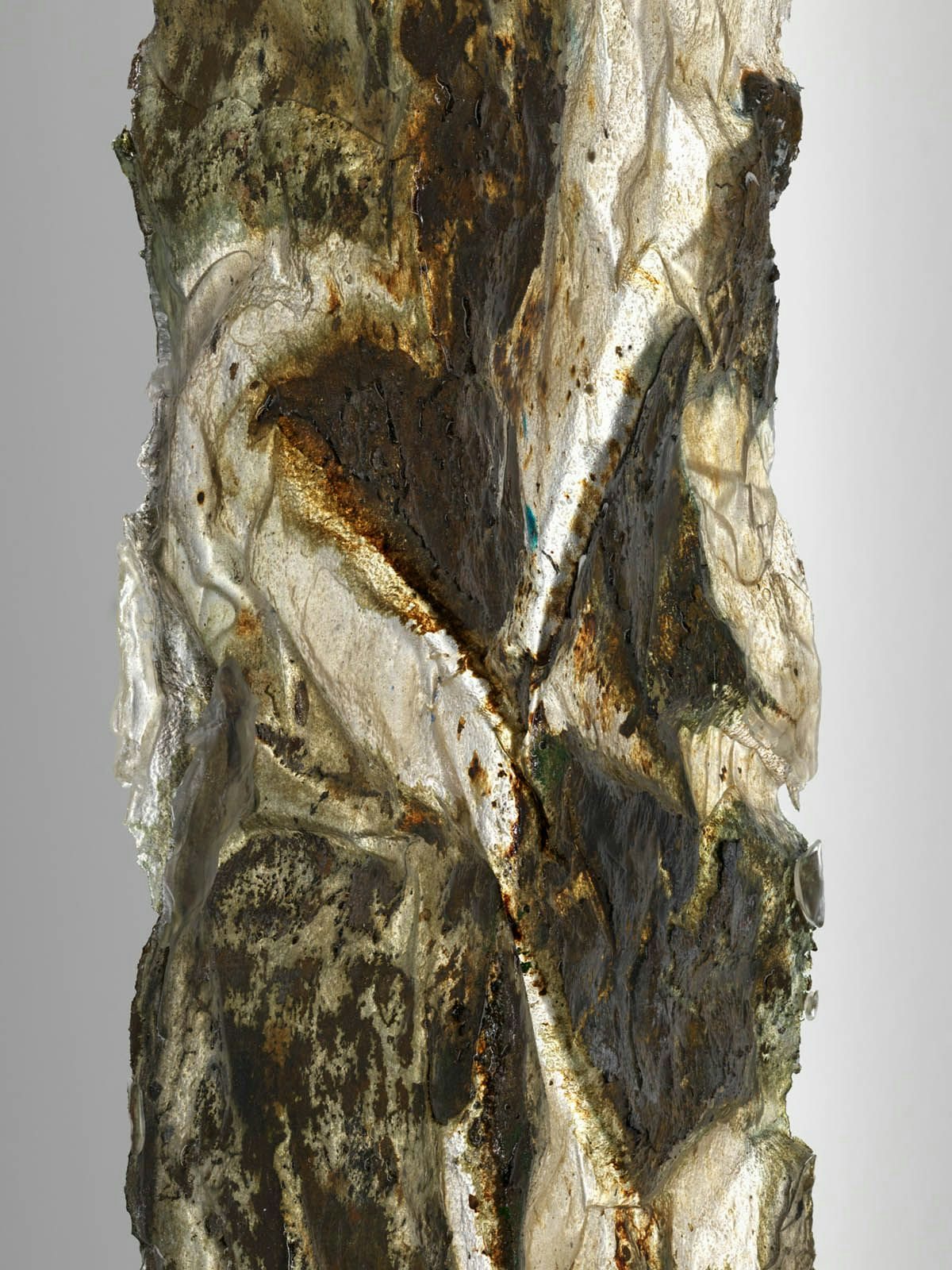
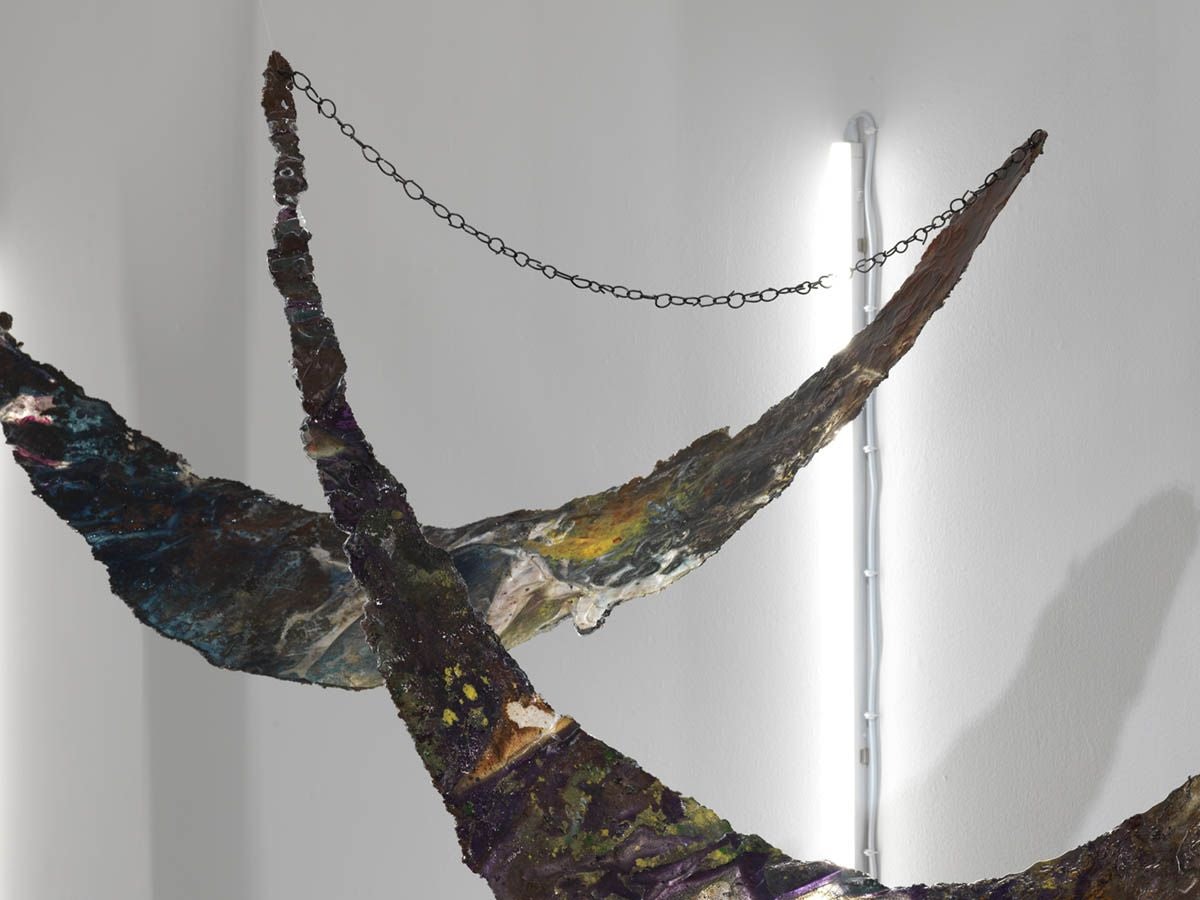
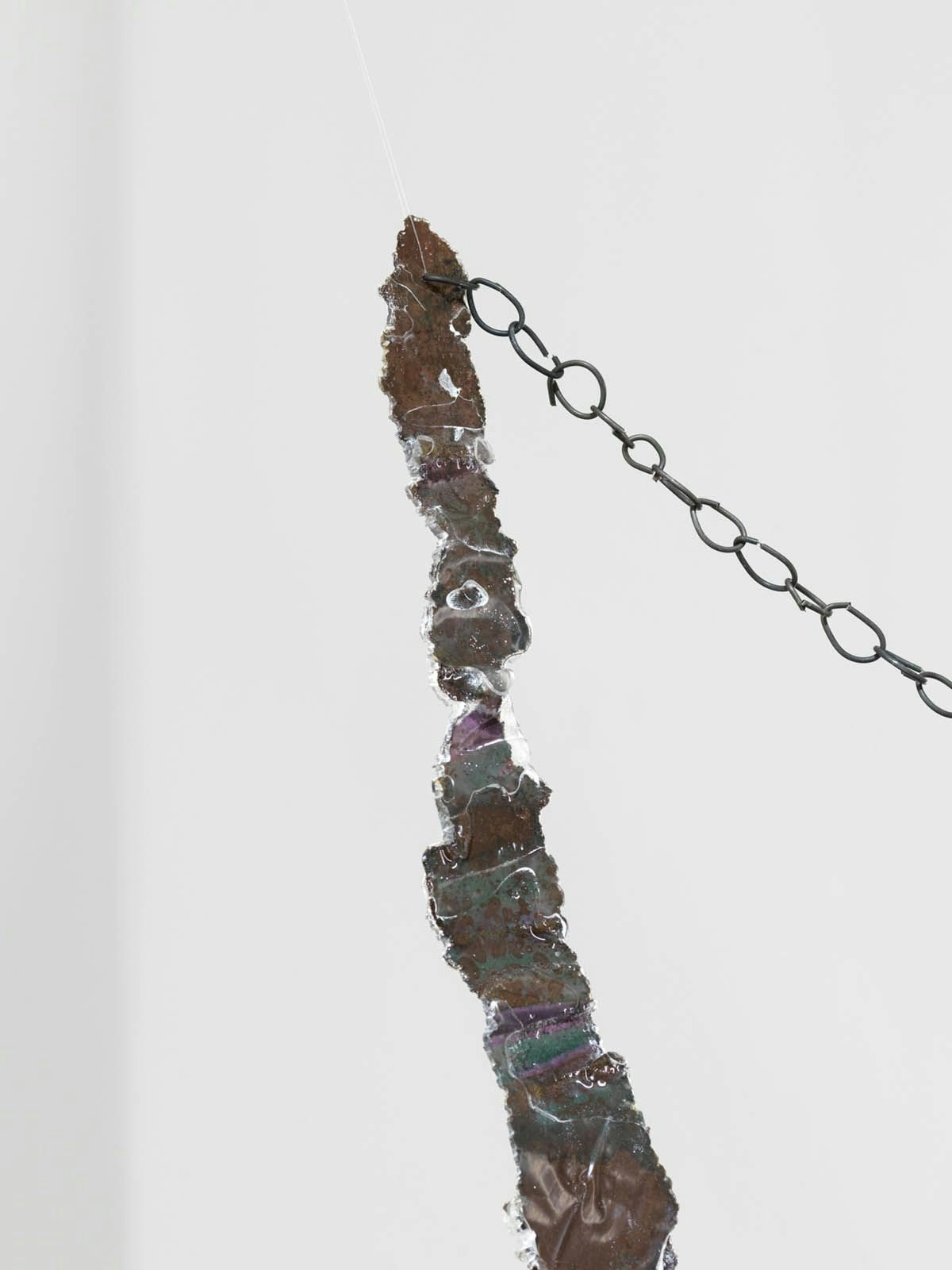
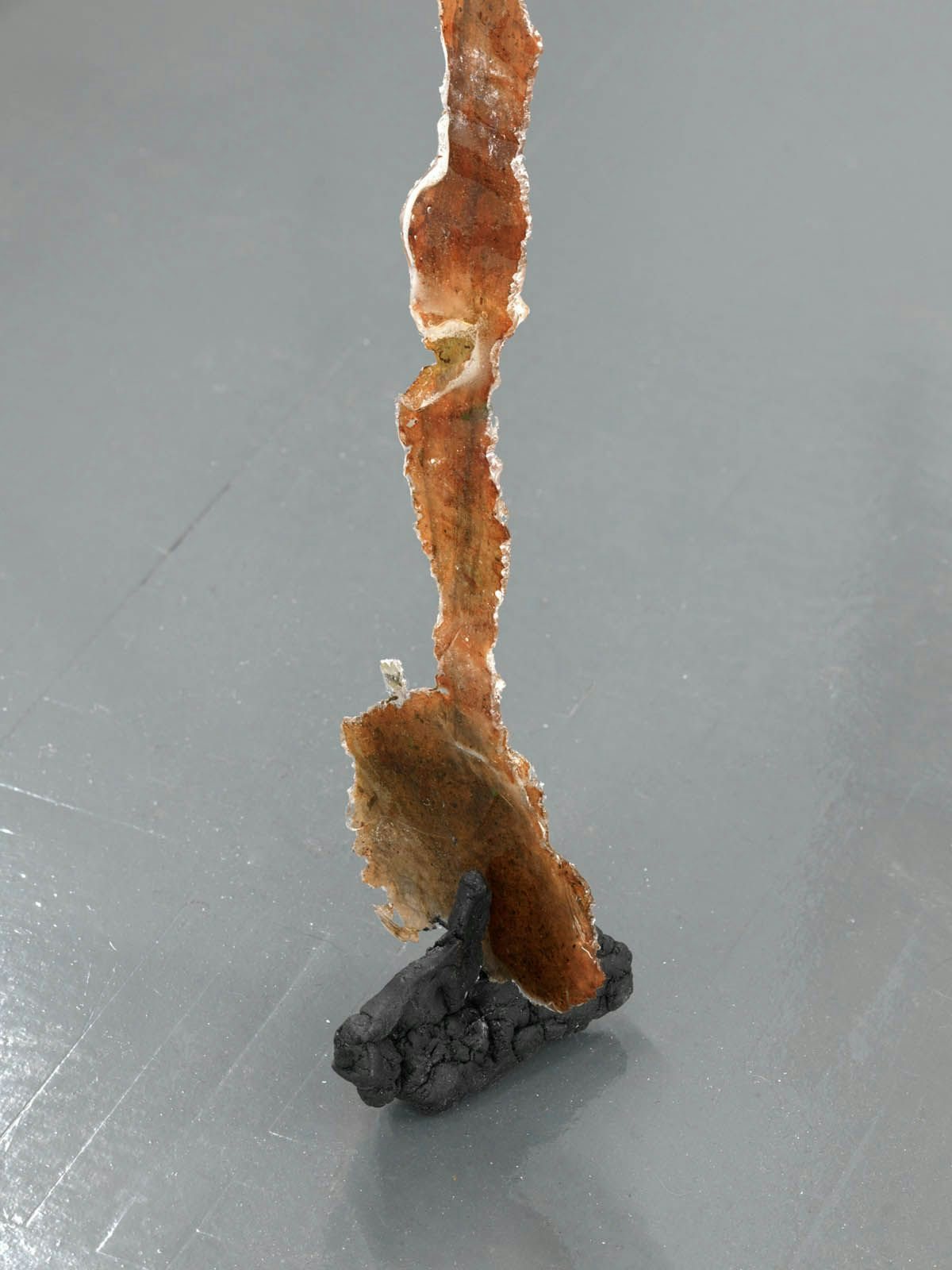
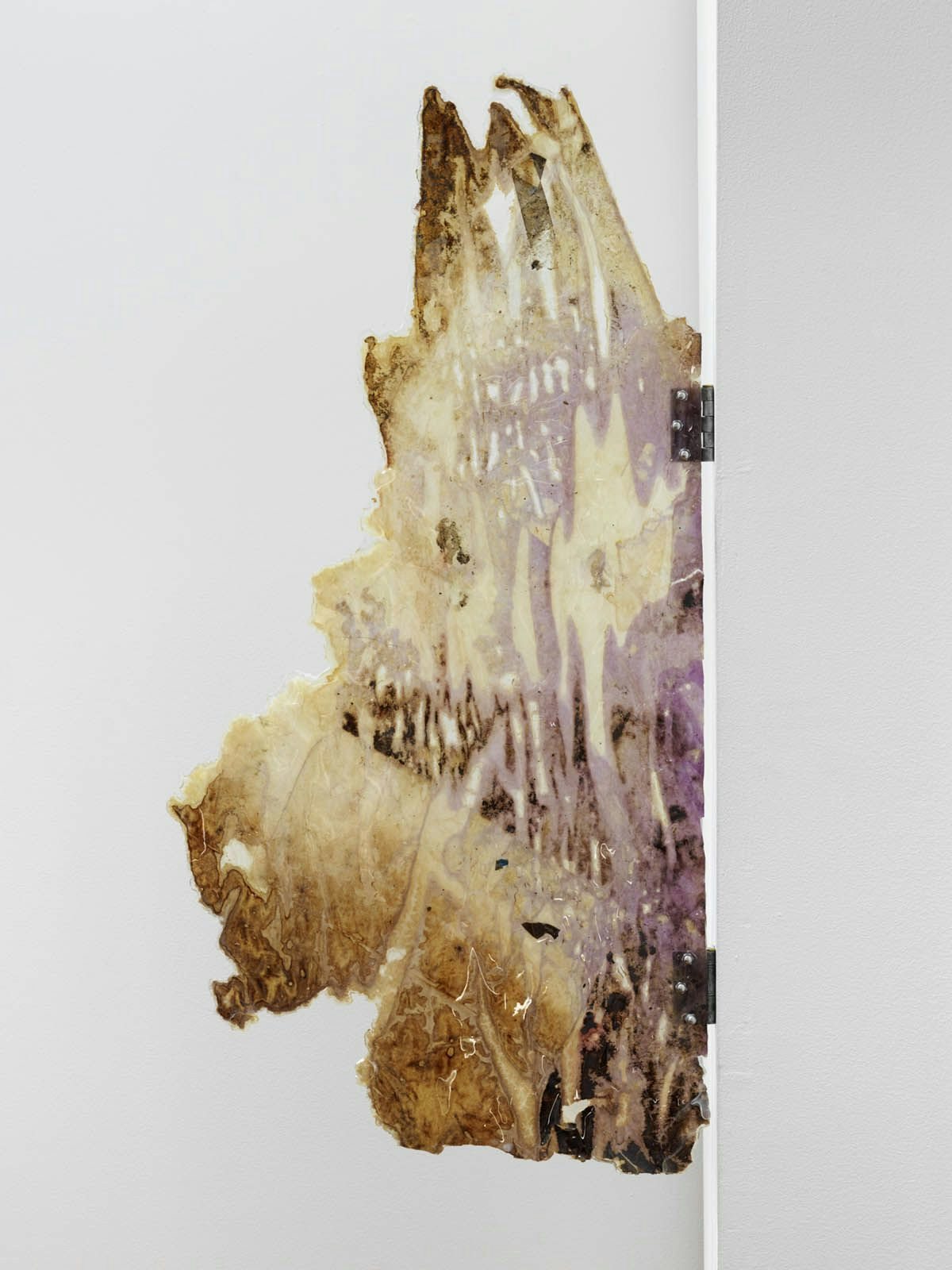
Larrie is pleased to present Cleave-To, the gallery’s first exhibition with New York-based artist Vanessa Thill, opening Thursday, May 2.
In Cleave-To, Thill creates a hallowed space with a series of thresholds delineated by Thill’s membrane-like-sculptures. Hung like banners, the slick, gem-like surfaces of Thill’s sculptures create room for both affinity and repulsion. As implied by the word “cleave,” meaning both a split and a union, they evoke wonder, while their flayed, flesh-like presence appears solemnly unsettling.
Thill’s practice explores the ways that non-human systems animate our material and spiritual surroundings, implicating us all as perpetual collaborators with unknown forces. The flux of material interactions is at the center of the works’ creation. Her sculptures are created by submerging paper in a liquid pool of dozens of dollar-store ingredients ranging from cleaning supplies to natural pigments and foodstuffs.
Thill’s palette mixing is a process of contamination. As liquids evaporate over time, disparate substances interact and crystallize together to form a richly textured surface. This tableau of chance encounters, of cleaving to and away, is then locked in place with a resinous layer. Through this animate and alchemical process, the materials reveal their own form of agency in shaping their terrain.
While the results may be sublime, the logic of flow that forms these works has a sinister side. Thill refers to environmental catastrophe and the boundless chaos of our shifting climate paradigm as a framework for her practice. But grappling with expansive non-human forces can also have spiritual significance. A further understanding of these vast streams of energy can be found in the medieval Jewish mystical tradition of Kabbalah, in which divinity is thought to flow through ten nodes often described as garments, veils, or shards of light. This belief system prioritizes constant and endless flow as a model of sacred kinships throughout the universe. Drawing on this approach, Thill’s sculptures map the continuity and sanctity of the unknown, taking a grimly hopeful stance toward both the anxiety and grandeur of unknowable profusion.